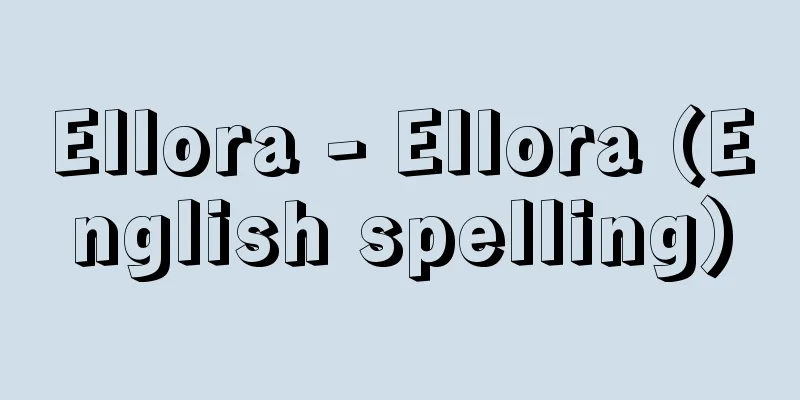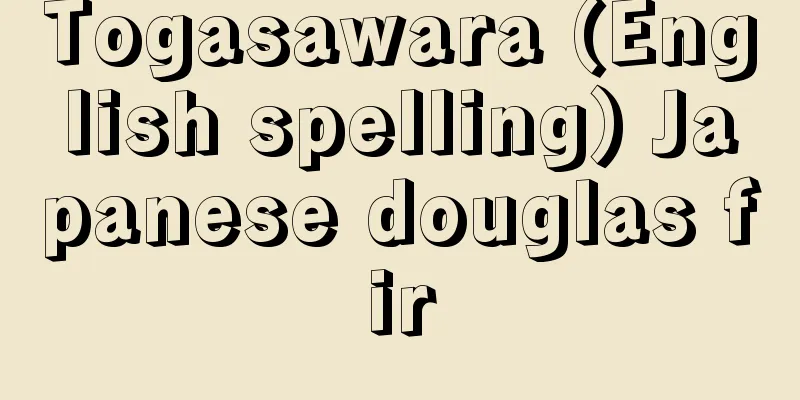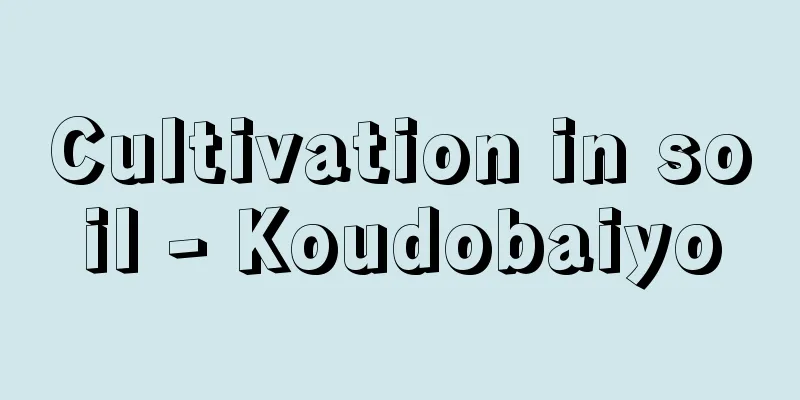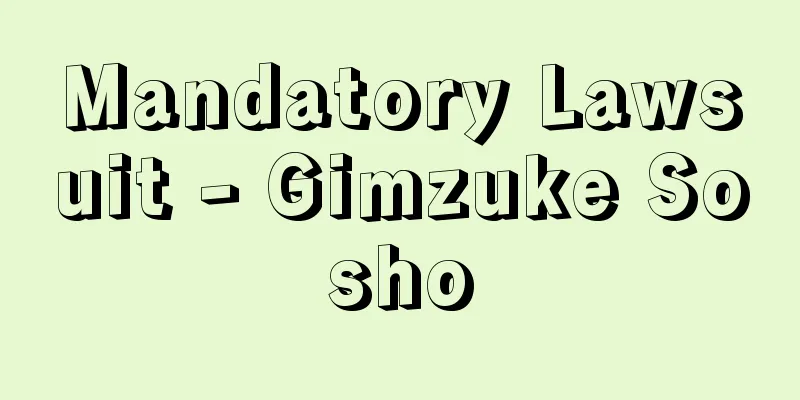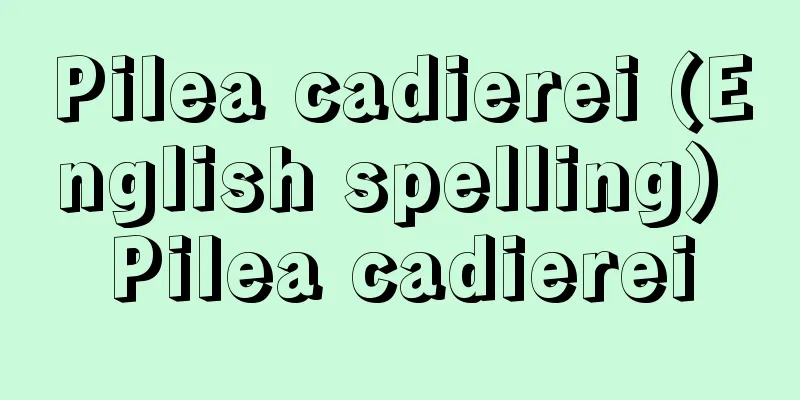Perception (English/French), Wahrnehmung (German)
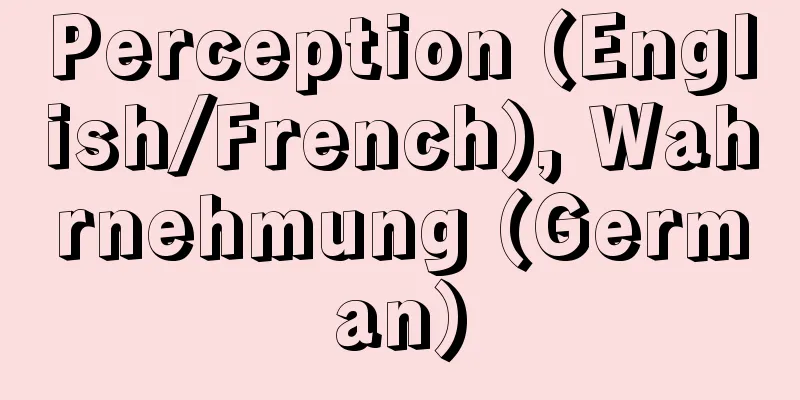
|
Perception refers to the experience of knowing about objects or things as a whole in our sensory experience. When we open our eyes, we can see houses, trees, cars, and people outside the window, and inside the house we can see various pieces of furniture and family members, and we can know their spatial relative positions. We can also hear the sound of the wind and voices. Furthermore, we can know the shape and position of tableware by touching it with our hands. Such experiences of sight, hearing, touch, and other senses related to objects as a whole are called perception. We humans obtain all information through our senses. The senses have long been divided into five senses: sight, hearing, smell, taste, and touch. In addition to these, there are organic senses, sense of balance, and sense of muscle movement. Vision allows us to know about distant stars, touch allows us to perceive objects close to us, and organic senses allow us to perceive the situation inside our bodies. Perception allows us to know the situation in the environment, take appropriate action in response, and know the results. We also know a lot of intellectual and social information as visual information such as letters and images, auditory information such as sounds, tactile information about familiar objects, and taste and smell information about food. Perception also plays an important role in interpersonal communication, as we see other people's actions and facial expressions, hear their voices, and feel their bodies. Perception also plays an important role in the arts, such as painting, film, theater, and music. Perception does not simply mediate intellectual information; it also has a significant effect on people's emotions. [Perception and Sensation] In the past, there was a strict distinction between sensation and perception, with sensation considered to be an element of perception, but today the distinction is not clear, and sensory experiences resulting from a single stimulus under simple conditions are often called sensations, while those resulting from a stimulus pattern under more complex conditions are called perceptions. Perception often has objectivity and meaning, and often has spatial and temporal extent, but sensation does not. For example, smelling the scent of a rose is a sensation, but sensing the presence of a rose flower as a result of this can be said to be perception. The act of seeing a color as red is itself a sensation, but a red light on a traffic light is an object that is spatially located and perceived with meaning. Listening to a pure tone is a sensation, but listening to the music played by a piano or hearing someone speak can be said to be perception. [Gap between perception and the object of perception] The world we perceive is not a faithful copy of the objective, physical world, and there is a considerable gap between them. This is not simply a mistake, but even if you look or listen carefully, you will perceive size, length, tilt, position, sound, and weight as different from the objective, physical world. This is called an illusion. Visual illusions are called optical illusions. Illusions have been studied since the end of the 19th century, and various optical illusions have been devised and named after the researchers. These optical illusions are not special problems limited to optical illusions, and although the amount of illusion varies, they indicate distortions of perception that occur all the time in our everyday perception. Illusions are not limited to vision, and there are other examples, such as the weight illusion (Charpentier's illusion), in which larger objects feel lighter and smaller objects feel heavier, even if they are physically the same weight. Illusions occur to many people, although to different degrees, and in this respect they are different from hallucinations. Furthermore, perception does not faithfully reflect the intensity or pattern of stimuli for the sensory organs. Even if the intensity of light reaching the retina from a white piece of paper placed in the shade is lower than that from a gray piece of paper placed in the sun, the white piece of paper is perceived as bright and the gray piece of paper as dark. This phenomenon is called brightness constancy (or lightness constancy). The size of the retinal image of an object of the same physical size decreases inversely proportional to the observation distance, but distant objects are perceived as being close to their actual size even if their retinal image is small. This is the phenomenon of size constancy. The shape of a surface that is tilted relative to the line of sight is distorted on the retina, but is perceived as being close to the shape it would be if it were directly facing the object. This is the phenomenon of shape constancy. Although the sound waves that reach the retina from a distant object are weak, they are perceived as not much different from the loudness of a sound emitted by a similar object close by. This is the phenomenon of loudness constancy. These constancy phenomena, or perceptual constancies, generally do not hold perfectly, but they make our perceptual world more stable and closer to the physical environment. [Emotions, emotions, and cognition] Red represents passion, while blue evokes a feeling of calm. Pointed shapes evoke a feeling of danger, while round shapes evoke a feeling of serenity. High pitched sounds give a cheerful impression, while low pitched sounds evoke feelings of melancholy. Furthermore, bright voices, sharp sounds, cool colors, light shapes, cheerful melodies, heavy movements, and other things felt through the five senses do not simply produce the individual sensations, but also produce various synesthetic tendencies, which in turn give rise to affects and emotions that go beyond the senses. These are sometimes collectively referred to as Kansei. They also form the basis of art such as painting and music, as well as design. The word cognition is also used in a broader sense than perception. It refers to the process by which people process information from the outside world, and involves the knowledge, needs, and attention of the perceiver. Even if the same information reaches the sensory organs, what is perceived will vary greatly depending on the experience and interests of the perceiver. When you open a newspaper, your eyes see a great many characters, but you will only recognize the characters that interest you. People who are interested in politics will notice political articles, and people who are very interested in sports will notice sports articles. Additionally, articles about people with the same surname as you will naturally catch your eye. You cannot read kanji that you do not know. If a person is placed in a simple situation for a long time where there is no change in what they see, hear, or touch, they may become mentally unstable and develop hallucinations. This situation is called sensory deprivation, but since some sense remains, it is more of a situation of perceptual deprivation. People are always seeking some kind of perception and change in it. The desire of people to look outside the window, watch television, read books, and listen to music can be said to be a manifestation of the need for perception. When a person has some kind of impairment in perceptual ability, as well as impairments in intellectual or physical abilities, it causes a major handicap in life because the person is unable to obtain sufficient information about the environment in which he or she lives and acts. This shows the importance of perception. [History of Perception Research] Consideration of perception began as early as the Greek period. Plato believed that the entire empirical world known through the senses was merely an incomplete manifestation of pure ideas. According to him, ideas already existed before the immortal soul entered the human body, and were recalled using the senses as clues. This is similar to the concept of schema in later cognitive psychology. While Plato neglected the senses, Aristotle believed that the senses consisted of sight, hearing, smell, taste, and touch, and that knowledge of the outside world was given through these five senses. However, he believed that experiences gained through each sense only provided individual knowledge, and that knowledge obtained by integrating these senses provided clues for recognizing objects. He considered the function of integrating multiple senses to be common sense, and gave examples of motion, stillness, shape, size, and number. This is similar to the modern distinction between sensation, perception, and cognition. In the early modern period, physicist Newton I. used a prism to separate sunlight into seven colors, and confirmed that when these colors were focused with a lens, they returned to white. He also observed the phenomenon of color mixture, which occurs when light is mixed by focusing only some of the colored light with a lens. In his book Optics (1704), he discussed color vision as well as the physical properties of color. He stated that "The Rays are not coloured," and viewed color purely as a sensation. He said that it was inappropriate to call it red light, and that it should be called "Red-making Ray." This clearly shows that he viewed color as a sensation and clearly distinguished it from light rays as a physical entity. Locke, J. (1706), a British empiricist philosopher who denied the idea of innate ideas, responded negatively to a question raised by his friend Molyneux, W.: "If a man who is born blind grows up and is able to distinguish between a sphere and a cube by touch, and then opens his eyes, can he distinguish between a sphere and a cube by sight?" Later, Barkley, G., in his essay towards new theory of vision (1709), argued that distances project only one point on the fundus of the eye, regardless of whether the object is near or far away. The distance between objects that are quite far away is rather a function of judgment based on experience (empiricism). In response to Molyneux's question, he stated that a person with his eyes open would not be able to distinguish between a sphere and a cube by looking at them with his eyes alone, because he has not acquired the habitual association of touch and vision. In the early 19th century, Young, T. published the prototype of the trichromatic theory of color vision. He believed that light is a wave motion, and that color vision occurs when the nerve endings on the retina resonate with the light that reaches the retina, and he hypothesized three types of nerves: red, green, and violet. He believed that light other than these three primary colors corresponds to the light by simultaneously resonating with two types of nerves that sense light at a relatively close resonance number to that of the light. For example, yellow light causes red and green nerves to resonate simultaneously. It was assumed that this state is a signal that notifies the cerebrum of the arrival of yellow light. Half a century later, this theory was re-proposed in a refined form by Helmholtz, H.L.F.von (1860) (Young-Helmholtz trichromatic theory). During this time, the physiologist Müller, JP (1838) clearly stated that sensory nerves are differentiated according to the type of sensation in his theory of specific nerve energies. This theory first clarifies that sensations do not directly reflect the physical properties of the outside world, but are indirectly generated as a result of nerve excitation caused by external stimuli, and then explains that such nerves are different for the five senses of sight, hearing, taste, smell, and touch (the modern theory of feature detectors can be said to be an extension of this theory). On the other hand, the German idealist philosopher Kant, I. (1781) argued that space and time are innate intuitions. Müller advocated nativism, a theory of spatial perception, on the basis that the spatial arrangement of nerve fibers is directly reflected in perception. This idea is thought to have led to Weber, EH (1852)'s hypothesis of the sensory circle (an area on the skin considered to be the two-point threshold of touch), Lotze, HR (1852)'s theory of local signs (the idea that vision and touch have properties specific to the local area that is stimulated), and Hering, E. (1864)'s theory of innate spatial vision through binocular vision. In his research on sensation, Helmholtz was faithful to Müller's theory of specific nerve energy, and was an innate theorist, as seen in his trichromatic theory of color vision and his resonance theory of hearing. On the other hand, in his research on perception, he was influenced by British empiricist philosophy and was an empiricist. This is best expressed in the theory of unconscious inference. This unconscious inference was formed by the repetition of associations in past experiences, and was considered to be irresistible and unable to be consciously eliminated. He explained various perceptual phenomena using this theory of unconscious inference. His theory has had a great influence on subsequent research into perception. For example, Gregory, RL (1998), a leading contemporary perceptual psychologist, strongly supports this theory. Wundt, W. (1896), who established psychology as an independent academic field, considered human consciousness to be the subject of psychology and the mission of psychology to be to analyze it into mental elements using the introspection method described below. According to him, mental elements include pure sensations and simple feelings, which combine to form various mental complexes, and perceptual representations are a type of mental complex. In this case, mental complexes can have new properties that are not present in the mental elements that compose them, and he said that this is due to the principle of creative synthesis. Titchener, E.B. (1910), who followed in his tradition, argued that perception is a complex experience with concrete meaning, which can be analyzed to reveal sensations and mental images, but that meaning arises from the context of how these are combined (context theory of meaning). Gestalt psychology, which emerged in the early 20th century, calls a holistic process that is more than a simple collection of elements Gestalt, and from this standpoint, it discusses perception as a holistic process that cannot be broken down into a collection of sensations. The first research from the standpoint of Gestalt psychology, conducted by M. Wertheimer in 1912, was on motion vision. He took the phenomenon of apparent motion, in which the impression of movement is created between two points due to successive stimuli at two points, as an example of a holistic process that cannot be analyzed into the sensation of two light points. He believed that the excitement caused by successive stimuli at two points on the retina causes a lateral shift in a physiological process in the central nervous system. Furthermore, Köhler, W. (1920) emphasized that the Gestalt principles also hold true in physical phenomena, and that the physiological processes of the brain are also physical phenomena and are governed by the Gestalt principles, and that psychological phenomena exhibit Gestalt properties because the physiological processes that support them have Gestalt properties (psychophysical isomorphism theory). From this standpoint, he later conducted research on figural aftereffects. In contrast, Watson, JB (1913), who advocated behaviorism at roughly the same time, did not treat consciousness as the subject of psychological research, and the main purpose was to clarify the relationship between stimuli and responses, and problems of sensation and perception were treated as stimuli discrimination behavior. For example, color perception was considered to be a problem of wavelength discrimination. However, in the neo-behaviorism of Tolman, EC (1932) and others, it became possible to treat perception as one of the assumed intermediate variables between stimuli and responses. In the mid-20th century, Bruner, JS (1951), Neisser, U. (1967), and others began to popularize approaches from the perspective of cognitive psychology, which sees perception as a process in which the perceiver's existing expectations, hypotheses, or schemas are confirmed by external stimuli. Research then began to explore how these expectations are formed and how past experiences, desires, and attention affect perception. In the cognitive psychology approach, perception is considered to be part of the information processing process carried out by the perceiver, and is considered to be an intermediate process that extracts the characteristics of information input to the sensory organs and sends them to higher information processing processes such as memory and thinking. On the other hand, Gibson, JJ (1979) advocated an ecological approach to perception, viewing the perceiver as an active actor in the environment, and stressed the importance of the concepts of invariants, which are environmental information that remains unchanged even when the environment changes or the perceiver moves, and affordance, which refers to the ecological role of environmental objects for the perceiver. In this way, the history of research into perception seems to have developed by fluctuating between the conflict between innate and experiential theories - whether perceptual functions are innate or based on past experience; the conflict between elementalism and wholism - whether perception is a combination of sensory elements or a whole that cannot be broken down into elements; and the conflict between whether perception is passive bottom-up processing based on information from the outside, or active top-down processing based on ideas, expectations, schemas, etc. that the perceiver already has. [Research methods for perception] Before psychology became an independent field, consideration of perception was either the speculative study of everyday experiences by philosophers or the study accompanying physical experiments on light, sound, etc. by natural scientists. Bund, who established psychology as an independent academic discipline in the second half of the 19th century, defined the subject of psychology as direct experience, that is, consciousness. Bund trained psychologists to observe and analyze their own consciousness in order to use it as basic data for psychology. This is introspection. Perception, which is part of consciousness, was also studied using introspection. However, with this method, only the consciousness of the trained psychologist can be the subject of research. The consciousness of infants and mentally disabled people cannot be sought through introspection. The limitations of introspection were clear. In fact, Bund himself widely used the psychophysical method invented by Fechner, GT (1860) and the reaction time method started by Donders, FC (1869), and expanded his consideration to the psychological states of infants and animals. In addition, in order to strictly control the stimulus conditions in sensory and perceptual research, various experimental devices are used in the laboratory to control the stimuli and measure the reactions. Even in today's psychology, research subjects (called subjects, observers, participants, etc.) are sometimes asked to report directly on their experiences. This is a type of introspective report. However, reporting is merely a part of linguistic behavior, and the contents of the report are not understood to directly represent the contents of a person's consciousness. Even if the fact that a certain introspective report has been made is an objective fact, the contents of the report cannot be said to be an objective fact. A method of capturing a perceptual phenomenon as it is, without taking an analytical attitude, like Bunt's introspection method, and of having the perceiver describe its characteristics and explore the conditions under which it exists, is called experimental phenomenology. The seeds of this method can already be seen in Goethe, JW von's color research, but typical examples include Katz, D. (1911)'s research on the mode of appearance of color, in which he named and classified the same color blue into Flächenfarbe (film color) for its unclear appearance like the blue of the sky, Oberflächenfarbe (surface color) for its clear appearance like the blue of colored paper, and Raumfarbe (volume color) for its spatial color that fills space like the blue of water, and Rubin, EJ's research on figure and ground (Figure and Ground) (1921). Gestalt psychologists also make extensive use of this method, which is particularly effective in discovering new perceptual phenomena. While we can certainly observe our own perceptions and sensations, we have no idea what other people's perceptions and sensations are. We can only guess from words, actions, and facial expressions. On the other hand, anyone can observe behavior. For example, in the Ishihara color vision test, people are asked to read numbers made up of colored spots. The colors of the spots that make up the numbers and the colors of the spots that make up the background look similar to people with color vision deficiencies, making it difficult for them to read the numbers. The important thing here is that this test never asks people to name colors. In the case of color vision tests, the test is whether or not they can distinguish (discriminate) between the colors of the background and the numbers. Discrimination behavior can also be used to study the color vision of animals. Frisch, K. von (1927) studied the color vision of honeybees through their discrimination behavior with colored paper and monochromatic light. Psychophysical measurement methods, which are still widely used in sensory and perceptual research, are fundamentally very objective methods based on the relationship between stimuli and responses, and Graham, CH (1950) pointed out that they are compatible with behaviorist methodology. This is because the physical values of the stimuli that systematically change the probability of simple responses such as "yes," "no," "big," and "small" appearing at a constant rate (e.g., 50%) are set as thresholds or points of subjective equality. Furthermore, in recent years, animal psychophysics and infant psychophysics have been developed to apply psychophysical measurement methods to animals and infants to study their sensory and perceptual behavior, and are being applied to sensory and perceptual research in animals and infants. Experimental research into perception requires strict control of the stimuli that give rise to perception and measurement of the response. For this reason, various experimental equipment has been developed and used since the time of Bundt. Some of these have been adapted for use in physics, physiology, and medicine, but many are unique to psychology. Examples include color mixers, instantaneous exposure devices, stereoscopes, variable sound generators, olfactometers, time measuring devices (chronoscopes), and kymographs. Since then, improvements have been made as technology has advanced, and today computers are widely used to control and present stimuli and measure responses. In addition, darkrooms, soundproof rooms, and odorless rooms are used as laboratories to block out external influences. Perception research has been conducted in close relation to the physiology of each era. In the early days, physiologists conducted perception research, but later psychologists began to use physiological methods. In the early days, the relationship with the physiology of sensory organs such as the retina and cochlea was studied, but gradually the relationship with the physiology of each sensory area of the brain was discussed, and today the relationship with higher brain areas is being studied, and measurements such as functional Magnetic Resonance Imaging (fMRI) are also used in perception research. →Perception of movement →Sensation →Sensitivity →Gestalt psychology →Homeostatic phenomena →Illusions →Experimental psychology →Figure aftereffect →Psychophysics →Psychophysical measurement methods →Cognition [Oyama Tadashi] Latest Sources Psychology Encyclopedia Latest Psychology Encyclopedia About Information |
|
知覚とは,われわれの感覚的経験の中で,まとまった対象や事物について知る経験を指す。われわれが眼を開けば,窓の外には家や木や自動車や人びとが見え,家の中には種々の家具や家族の姿が見え,それらの空間的位置関係を知ることができる。また,耳には風の音や声が聞こえる。さらに,手で触ることによって食器の形や位置を知ることもできる。このようなまとまったものに関する視覚や聴覚や触覚などの経験を知覚という。われわれ人間はすべての情報を,感覚を通して得ている。感覚は古くから視・聴・嗅・味・触の五感(五官)に分けられてきた。このほかにも有機感覚,平衡感覚,筋運動感覚などがある。視覚によって遠方の星について知ることができ,触覚によって身近な対象を知覚し,有機感覚によって体内の状況を知覚する。知覚によって環境の状況を知り,それに応じて適切な行動を取り,その結果について知る。また,多くの知的・社会的情報を文字,画像などの視覚情報,音声の聴覚情報,身近な事物の触覚情報,食物に関しての味覚・嗅覚情報として知る。他の人の動作・表情を眼で見,声を聞き,身体に触れるなど,知覚は対人コミュニケーションにも大きく役立っている。また,絵画,映画,演劇,音楽などの芸術にも知覚が重要な役割をもつ。知覚は単に知的な情報の媒介をするだけでなく,人びとの感情に大きな効果を与えているのである。 【知覚と感覚】 かつて感覚sensationと知覚とを厳密に区別して,感覚を知覚の要素と考える立場もあったが,現代ではその区別は明確でなく,単純な条件下の単一の刺激により生じる感性体験を感覚とよび,より複雑な条件下で刺激パターンから生じるそれを知覚とよぶ場合が多い。知覚は対象性と意味をもち,空間的・時間的な広がりをもつことが多いが,感覚にはそれらがない。たとえば,バラの香りを嗅ぐのは感覚であるが,それによりバラの花の存在を感じることは知覚といえる。色が赤いと見えること自体は感覚であるが,信号機の赤信号は空間的に定位され意味をもって知覚される対象である。純音を聴くのは感覚であるが,ピアノが発する音楽や人の話を聞くのは知覚といえる。 【知覚と知覚対象のずれ】 われわれが知覚している世界は,客観的・物理的世界を忠実に写したものではなく,かなりのずれがある。これは単なる間違いでなく,注意深く見ても,聞いても,大きさや長さや傾きや位置や音や重さが,客観的・物理的なものと違って知覚される。これを錯覚illusionという。視覚における錯覚を錯視optical illusionという。錯覚は19世紀末から研究され,種々の錯視図形が考案され,それぞれの研究者の名前をつけてよばれてきた。これらの錯視は,錯視図形に限られた特殊な問題でなく,錯視の量に大小の差はあっても,日常のわれわれの知覚でつねに起こっている知覚の歪みを示しているものである。錯覚は視覚に限らず,たとえば物理的にまったく同じ重量のものでも,大きいものは軽く,小さいものは重く感じる重量感の錯覚(シャルパンティエの錯覚Charpentier's illusion)などがある。錯覚は程度の違いはあっても,多くの人びとに共通に生じるもので,その点で幻覚hallucinationとは異なる。 また,知覚は感覚器官に対する刺激の強度やパターンを忠実に反映していない。日陰に置かれた白紙から網膜に到達する光の強度は,日向に置かれた灰色紙から到達する光の強度より低くても,白紙は明るく,灰色紙は暗く知覚される。明るさの恒常性brightness constancy(あるいは明度の恒常性lightness constancy)とよばれる現象である。物理的に同じ大きさの対象の網膜像の大きさは観察距離に反比例して減少するが,遠方の対象は網膜像が小さくても実際に近い大きさに知覚される。大きさの恒常性size constancyの現象である。視線に対して傾いた面の形は網膜上では歪んでいるが,正対した場合の形に近く知覚される。形の恒常性shape constancyの現象である。遠方の対象が発する音から到達する音波は弱いが,知覚上は近くの同種の対象の発する音の大きさとさほど違って感じない。音の大きさの恒常性loudness constancyの現象である。これらの恒常現象constancy phenomenon,すなわち知覚の恒常性perceptual constancyは,一般に完全には成立しないが,われわれの知覚世界を物理的環境に近いより安定したものとしている。 【感情・情動・認知】 赤い色は情熱を表わし,青は平静を感じさせる。尖った形は危険を,丸い形は穏やかさを感じさせる。高い音は快活な印象を,低い音は陰鬱の感情を誘う。また明るい声,鋭い音,涼しい色合い,軽快な形,愉快な旋律,重い動きなど,五感を通して感じるものは,単にそれぞれの感覚だけでなく,さまざまな共感覚的傾向synesthetic tendencyを生み,さらに感覚を超えた感情affect,情動emotionも生じさせている。これらを総合して感性Kanseiとよぶこともある。絵画や音楽などの芸術やデザインの基礎ともなっている。 また,認知cognitionという語が知覚よりさらに広い意味に使われる。人が外界からの情報を処理する過程を指し,知覚者のもつ知識や要求や注意attentionが関係する。同じ情報が感覚器に到達しても,知覚者の経験や関心の違いによって,認知するものは大きく異なる。新聞を開くと非常に多くの文字が目に映るが,自分の関心がある文字しか認知されない。政治に関心がある人には政治関連の記事が,スポーツに関心が強い人には,スポーツ記事が目に付く。また,自分と同姓の人物の記事は自然に目に留まる。知らない漢字は読むことはできない。 人を,見るもの聞くもの触れるものに変化がない単純な状況下に長時間おくと,精神的に不安定になり,幻覚を生じたりする。このような状況を感覚遮断sensory deprivationとよぶが,ある程度の感覚は残されているので,むしろ知覚遮断の状況である。人はなんらかの知覚とその変化をつねに求めている。人が窓から外を眺めたり,テレビを見たり,本を読んだり,音楽を聞きたがるのは,知覚への要求の現われといえる。 人がなんらかの知覚能力の障害をもつと,知的能力や運動能力の障害と同様に,生活に大きなハンディキャップが生じる。自分が生活し行動する環境について,十分な情報が得られないからである。知覚の重要性を示している。 【知覚研究の歴史】 すでにギリシア時代に,知覚に関する考察が始まっている。プラトンPlatonは,感覚を通して知る経験的世界のすべてが純粋なイデアideaの不完全な現われにすぎないと考えた。彼によると,不滅な霊魂が人間の肉体に入る前にイデアはすでに存在して,感覚を手がかりとしてそれが想起されるという。後世の認知心理学のスキーマschemaの概念と通じるものがある。プラトンが感覚を軽視したのに対して,アリストテレスAristotelesは,感覚は視・聴・嗅・味・触より成るとし,外界の知識はこの五感five sensesを通じて与えられると考えた。ただ,個々の感覚を通じて得られた経験は個別的な知識を与えるにすぎず,それらの感覚を統合した知識が対象を認識する手がかりを与えるとした。彼は複数の感覚を統合する働きを共通感覚とし,運動,静止,形,大きさ,数をその例とした。今日の感覚と知覚と認知の区別に似ている。 近世に至り,物理学者ニュートンNewton,I.がプリズムを用いて太陽光を7色に分け,それらの光をレンズで集光すると白色に戻ることを確かめるとともに,一部の色光のみをレンズで集光することによって,光の混合により生じる混色color mixtureの現象を観察している。彼はその著『光学Opticks』(1704)の中で,色の物理的性質とともに,色覚についても論述している。彼は,「光線には色がついていないThe Rays are not coloured」と述べ,色をあくまで感覚としてとらえている。彼は,赤い光などとよぶことは不適切で,「赤を作り出す光線Red-making Ray」などとよぶべきだと述べている。これは彼が色を感覚としてとらえ,物理的存在としての光線と明確に区別したことをよく示している。生得観念を否定したイギリス経験論哲学者ロックLocke,J.(1706)は,友人であるモリヌークスMolyneux,W.が提起した疑問,「生まれながらの盲人が成人して,触覚で球と立方体が区別できるようになってから,開眼した場合,視覚によって球と立方体が区別できるか」に対して否定的に論じている。その後,バークリーBarkley,G.は『視覚新論A essay towards new theory of vision』(1709)において,距離は,遠くても近くても眼底に,ただ1点をしか投影しない。かなり遠くに離れている諸対象の距離は,むしろ経験に基づく判断の働きであると論じている(経験説empiricism)。前述のモリヌークスの疑問についても,開眼者は触覚と視覚の習慣的な連合を獲得していないので,眼で見ただけでは球と立方体の区別はできないと述べている。 19世紀初頭にヤングYoung,T.は,色覚の三色説の原型を発表している。彼は,光は波動であるとし,網膜上の神経の末端が網膜に到達した光と共振することによって色覚が生じると考え,赤,緑,菫の3種の神経を想定した。これらの三原色以外の光には,その光の共振数に比較的近い共振数に感じる2種の神経が同時に共振することで対応していると考えた。たとえば,黄の光には赤と緑の神経が同時に共振することとなる。この状態が大脳に黄の光の到来を知らせる信号になると想定された。この説は半世紀後,ヘルムホルツHelmholtz,H.L.F.von(1860)によって整備された形で再提案された(ヤング-ヘルムホルツの三色説Young-Helmholtz trichromatic theory)。この間に,感覚神経が感覚の種類に応じて分化していることを明確に述べたのが生理学者ミュラーMüller,J.P.(1838)の特殊神経エネルギー説die Lehre von den spezifischen Sinnesenergien,theory of the specific energies of sensesである。この説は,まず感覚は外界の物理的性質を直接に反映するものではなく,外界の刺激が生じさせた神経興奮の結果として間接的に生まれるものであることを明らかにし,次にそのような神経は,視・聴・味・嗅・触の五感によって異なっていることを説いている(現代の特徴抽出器feature detectorの説もこの延長線上にあるといえる)。他方,ドイツ観念論哲学者のカントKant,I.(1781)は,空間と時間は先天的直観であると説いた。ミュラーは,神経線維の空間的配列がそのまま知覚に反映されるとして,空間知覚の生得説nativismを提唱している。この考えは,ウェーバーWeber,E.H.(1852)の感覚圏sensory circle(触覚の2点閾によって考えられた皮膚上の領域)の仮説,ロッツェLotze,H.R.(1852)の局所徴験Lokalzeichen,local signの説(視覚や触覚には,刺激される局所に固有の性質があるという考え),へリングHering.E.(1864)の両眼視による空間視の生得説に至っていると考えられる。ヘルムホルツは,感覚の研究ではミュラーの特殊神経エネルギー説に忠実であり,色覚の三色説や聴覚の共鳴説に見られるように生得説的である。他方,知覚の研究に対しては,イギリス経験論哲学の影響を受けて経験説的である。それを最もよく表わしているのは,無意識的推論unbewusster Schluss,unconscious inferenceの説である。この無意識的推論は,過去経験における連合の反復によって形成されたものであり,抵抗しがたく,意識的にこれを排除することはできないとされた。彼は種々の知覚現象をこの無意識的推論の説によって説明している。彼のこの説は,その後の知覚研究に大きな影響を与えている。たとえば,現代の代表的知覚心理学者グレゴリーGregory,R.L.(1998)は強くこれを支持している。心理学を独立の学問として確立したブントWundt,W.(1896)は,人の意識Bewusstsein,consciousnessを心理学の対象とし,後述の内観法によって,心的要素に分析することを心理学の使命と考えた。彼によると,心的要素には純粋感覚reine Empfindung,pure sensationと単純感情einfaches Gefühl,simple feelingがあり,それらが結合して種々の心的複合体psychisches Gebilde,psychical elementを形成しているが,知覚的表象は心的複合体の一種であるとされた。その際,心的複合体はそれを構成する心的要素にない新しい性質をもつことがあるが,それは創造的総合の原理Prinzip der schöpferischen Synthese,principle of creative synthesisによるとした。彼の伝統を受け継いだティチナーTitchener,E.B.(1910)は,知覚は具体的な意味をもつ複雑な経験であり,それを分析すれば感覚と心像imageとなるが,その結合の仕方の文脈によって意味が生じるとした(意味の文脈説context theory of meaning)。 20世紀初頭に生まれたゲシュタルト心理学Gestalt psychologyは,単なる要素の集合以上の全体過程をゲシュタルトGestaltとよび,その立場から,感覚の集合には分解できない全体過程として知覚を論じた。ウェルトハイマーWertheimer,M.が1912年に行なった最初のゲシュタルト心理学の立場からの研究は,運動視の研究であった。彼は,2点の継時的刺激によりその2点間に運動印象が生じる仮現運動Scheinbewegung,apparent motionの現象を,2光点の感覚に分析できない全体過程の例とした。彼は,網膜上の2ヵ所の継時的刺激により生起した興奮は,中枢において一つの生理過程において横の移行を生じさせていると考えた。さらにケーラーKöhler,W.(1920)は,ゲシュタルトの諸原理が物理現象でも成り立っていることを強調するとともに,大脳生理過程も物理現象であり,ゲシュタルトの諸原理の支配下にあって,心理現象がゲシュタルト性を示すのは,それを支えている生理過程にゲシュタルト性があるからであると主張した(心理物理同型説psychophysical isomorphism theory)。彼はこの立場からその後に図形残効figural aftereffectの研究などを行なっている。これに対して,ほぼ同時代にワトソンWatson,J.B.(1913)が主張した行動主義behaviorismにおいては,意識を心理学の研究対象とせず,刺激と反応の関係の解明が主目的とされ,感覚や知覚の問題も刺激の弁別行動として扱われた。たとえば,色の知覚は波長の弁別の問題とされた。しかし,その後のトールマンTolman,E.C.(1932)らの新行動主義neo-behaviorismの立場では,知覚は刺激と反応の間に想定される媒介変数の一つとして取り扱うことが可能となった。 20世紀半ばになると,ブルーナーBruner,J.S.(1951),ナイサーNeisser,U.(1967)などにより,知覚を,知覚者がすでにもっている期待expectation,仮説hypothesis,ないしスキーマschemaを外部からの刺激によって確認する過程として見る認知心理学cognitive psychologyの立場からのアプローチが盛んになってくる。そして,その期待がいかにして形成されるか,過去経験や欲求や注意がどのように知覚に影響するかが,研究されるようになった。認知心理学的アプローチでは,知覚は,知覚者が行なう情報処理過程の一環とみなされ,感覚器に入力された情報の特徴を抽出して記憶・思考などのより高次の情報処理過程に送る中間過程とみなされる。他方,ギブソンGibson,J.J.(1979)は知覚への生態学的アプローチecological approachを主張し,知覚者を環境中の能動的行為者としてとらえ,外界から与えられる感覚情報中で,環境の変化や知覚者の移動に際しても不変性を保つ環境情報の不変項invariantと,環境的事物の知覚者にとっての生態学的役割を意味するアフォーダンスaffordanceの概念の重要性を唱えた。 このように知覚研究の歴史は,知覚機能が生得的なものか,過去経験に基づくものかという生得説と経験説の対立,知覚が感覚的要素の結合か,要素に分解できない全体かという要素論elementismと全体論wholismの対立,知覚が外部からの情報に基づく受動的なボトム・アップ処理bottom-up processingか,知覚者がすでにもっているイデア,期待,スキーマなどによる能動的なトップ・ダウン処理top-down processingかの対立の間を揺れ動きながら,発展してきた感がある。 【知覚の研究法】 心理学が独立する以前の知覚に関する考察は,哲学者による日常体験に関する思弁的考察か,自然科学者による光や音などの物理的実験に随伴する考察であった。 19世紀後半に心理学を独立の学問として確立させたブントは,心理学の研究対象を直接経験すなわち意識であると定義した。ブントは心理学者を訓練して,各自の意識を自分自身で観察し,分析して,心理学の基本データとしようとした。内観法Selbstbeobachtung,introspectionである。意識の一部である知覚も内観法によって研究された。しかし,この方法では,訓練を受けた心理学者自身の意識しか研究の対象にできない。幼児や,精神障害者の意識を内観によって求めることはできない。内観法の限界は明らかであった。実際にはブント自身も,フェヒナーFechner,G.T.(1860)の考案した精神物理学的測定法psychophysical methodやドンデルスDonders,F.C.(1869)らに始まる反応時間測定法reaction time methodを広く用いていたし,幼児や動物の心理状態にも考察を広げている。また感覚・知覚研究には,刺激条件を厳密に統制するため,実験室で種々の実験装置を用いて,刺激を統制し反応を測定している。今日の心理学でも,研究対象とする人びと(被験者subject,観察者observer,実験参加者・実験協力者participantなどとよばれる)に各自の体験した事柄をそのまま報告してもらうことがある。一種の内観報告である。しかし,報告はあくまで言語行動の一部であり,報告内容がそのままその人の意識内容を表わしているとは解していない。ある内観報告がなされたということは客観的事実であっても,その内容は客観的事実とは言えない。 ブントの内観法のように,分析的態度を取らずに知覚現象をありのままにとらえてその特徴を知覚者自身が記述し,その成立条件を探る方法を実験現象学experimental phenomenologyとよぶ。ゲーテGoethe,J.W.vonの色彩研究にすでにその萌芽が認められるが,カッツKatz,D.(1911)が同じ青でも,空の青のように定位の不明確な現われ方を面色Flächenfarbe,film color,色紙の青のように定位の明確な表面色Oberflächenfarbe,surface color,水の青のように空間を満たす空間色Raumfarbe,volume color,などと名づけて分類した色の現われ方Erscheinungsweise der Farbe,mode of appearance of colorの研究,ルビンRubin,E.J.(1921)の図と地Figur und Grund,figure and groundの研究などがその典型例である。ゲシュタルト心理学者もこの方法を駆使しており,とくに新しい知覚現象の発見に有力な方法である。 自分の知覚・感覚はたしかに自分で観察できるが,他の人の知覚・感覚はまったくうかがい知れない。ことばや行動や表情から推測するだけである。それに対して,行動はだれにでも観察できる。たとえば石原式色覚検査表では,色の斑点から構成された数字を読むことが求められる。数字を構成する斑点の色と,地となる部分の斑点の色が色覚障害者には似て見えるために,数字が読みにくいのである。ここで重要なことは,この検査では決して色名を答えさせないことである。色覚検査表の場合,地と数字の色の違いが区別(弁別discrimination)できるかをテストしているのである。弁別行動を用いれば,動物の色覚も研究できる。フリッシュFrisch,K.von(1927)は,ミツバチの色覚を色紙や単色光の弁別行動を通して研究した。現在も広く感覚・知覚研究に用いられている精神物理学的測定法は,基本的には刺激と反応の関係に基づく非常に客観的な方法で,行動主義的方法論に適合することがグレアムGraham,C.H.(1950)によって指摘されている。刺激を組織的に変化させて「はい」「いいえ」,「大」「小」などの単純な回答の出現率が一定(50%など)となるための刺激の物理的値を閾値thresholdや主観的等価点point of subjective equalityとしているからである。さらに,近年は精神物理学的測定法を動物や乳児に適用して,動物や乳児の感覚・知覚を研究する動物の精神物理学(心理物理学)animal psychophysicsや乳児の精神物理学(心理物理学)infant psychophysicsも発展して,動物や乳児の感覚・知覚研究に適用されている。 知覚の実験的研究には,知覚を生じさせる刺激の厳密な統制と反応の測定が必要である。そのため,ブントの時代から種々の実験機器が開発され使用されてきた。その一部は物理学,生理学,医学へも流用されたが,心理学独自のものも多い。たとえば混色器,瞬間露出器,実体鏡(ステレオスコープ),可変音響発生機,嗅覚計,時間測定器(クロノスコープ),カイモグラフなどである。その後,技術の進歩に従い,改良を重ね,今日では刺激の統制・呈示と反応の測定にコンピュータが広く用いられている。また,外部からの影響を遮断するための実験室として暗室,防響室,無臭室などが利用される。 知覚研究は,それぞれの時代の生理学と緊密な関係を保って進められてきた。初期には生理学者が知覚研究を行なってきたが,その後心理学者が生理学的手法を利用するようになった。初期には感覚器官である網膜や蝸牛殻などの生理学との関連が研究されたが,しだいに脳の各感覚野の生理学との関連が論じられ,今日ではさらに高次の脳領域との関連が研究され,機能的磁気共鳴画像functional Magnetic Resonance Imaging(fMRI)などの測定なども,知覚研究に利用されている。 →運動の知覚 →感覚 →感性 →ゲシュタルト心理学 →恒常現象 →錯覚 →実験心理学 →図形残効 →精神物理学 →精神物理学的測定法 →認知 〔大山 正〕 出典 最新 心理学事典最新 心理学事典について 情報 |
Recommend
American bamboo grass - American bamboo grass
...The Japanese name is Koya-zasa, which probably...
Agechi
The confiscation of part or all of the land of a ...
Ingarra - Ingarra
…Ancient city of Sumer. The ruins are located in ...
Lost wax
...Needless to say, the former technique came fir...
Curia Romana (Latin)
The Holy See is the central authority that assist...
Mariano Melgarejo (English spelling)
Bolivian soldier and politician. A mestizo (mixed...
Ishiyama Gunkimono - Ishiyama Gunkimono
But the Ishiyama Uprising was an inevitable confr...
Pepin [II] - Pepin
Mayor of the Frankish Kingdom. Grandson of Pippin ...
Ke Shaobin
A modern Chinese scholar. Famous for being the au...
Adoption of Christ - Christian Adoption Theory
...Bishop of Antioch in the 3rd century who preac...
Weller, A.
…Many chemical historians consider this period to...
Ney - Ney (English spelling) Persian
A non-reed aerophone used in Western Asia, Centra...
metaphor
…In other words, in order to maximize the evocati...
Capital losses
This refers to losses due to a fall in the value ...
The vassal system
A system of lord-vassal relationships with a stron...
